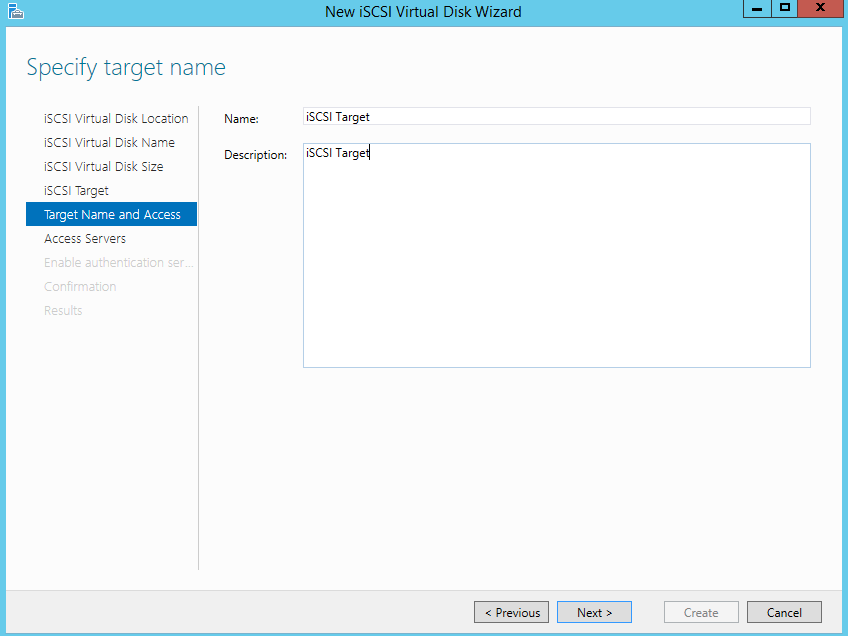- Free Iscsi Initiator For Mac Installer
- Free Iscsi Initiator For Mac Os
iSCSI is a network storage protocol that allows sending and receiving of SCSI commands over a TCP/IP network. This allows you to leverage Ethernet, a low cost network medium to get SAN performance and network based storage. While you can use pretty much any Ethernet switch, I'd recommend that if you're going to use iSCSI that you dedicate a switch to it, or use quality switches and build a dedicated VLAN for your iSCSI traffic.Recently, I've recently been seeing a lot of traffic about whether or not you can use iSCSI with Mac OS X. The answer, yes. As with Xsan, to get started with iSCSI you'll need an initiator and a target. Studio Network Solutions (SNS) provides a software-based iSCSI initiator called globalSAN that can be downloaded and used free of charge from their site. Alternatively you can also look into the Atto Xtend SAN, which runs about $200 for 1 user with volumes discount slashing the prices to about $90 for 100 users. Software based initiators will use the CPU of your system and a built-in or third party standard Ethernet port, but you can also buy a dedicated card which will offload the processing power to the card, which in some cases will be required for various performance reasons. For the purpose of this article we're going to use the SNS globalSAN software.For the purposes of this howto, we're using the free version of software called Starwind from RocketDivision. However, we've also tested LeftHand, Isilon, OpenFiler, iSCSI Target (from Microsoft) and many others (including dozens of appliances) with the Mac. So for starters, fire up your iSCSI storage and share it out. Next, extract the installer as seen in the globalSAN installer screenshot.Next, launch the installer and click on the Continue button at the Welcome screen.At the Software License Agreement screen, read the licensing agreement and then click on the Continue button if you agree to the terms.At the uninstall screen, click on continue. If you later need to uninstall the software you would re-run this installer and click on the Uninstall button.At the Standard Install screen you can click on the Custom Install button to allow you to choose which packages within the metapackage to install. It is best to leave them all checked and then click on the Continue button.Provided everything installs properly you will next be at the Installation Completed Successfully screen. Here, click on Restart and then log back into the system when it comes back online.Once you are logged back in, open System Preferences and you'll see the new System Preference for globalSAN iSCSI.If you click on the globalSAN System Preference you'll be able to add your first portal. Each share will have a unique IP and be referenced as a portal. Click on the add icon (+) to add your first portal.At the dialog box, type in the IP address of your iSCSI target and the port number, which defaults to 3260 for a majority of the products you may use.If you require authentication to your target then click on the Advanced… button and enter the pertinent information (Kerberos is not yet supported as an authentication method but CHAP is).You can also click on the IPSec tab if you use IPSec for authentication on your targets.Click OK to add your portal and you will be taken back to the Portals tab of the globalSAN System Preference. Here you should see your portal listed. If you don't, click on the Refresh button.Now that you have your portal populated, click on the Targets tab and you should see the storage listed. Click on it and then click on the Log On button to initiate your session into the storage. At this point, it will mount on the Desktop (provided you have already given it a file system) and you will be able to use it as you would any other storage. You can check the box for Peristent if you would like to have the volume always mounted on the system.If you click on the Sessions tab then you will be able to look at various statistics about your storage including the LUN identifier and disk name.If you don't yet have a file system on the storage then you can go ahead and open Disk Utility and you will see the storage listed there, click on it, click on the Partition tab and you will then be able to give it a file system.So it's pretty easy to use iSCSI with Mac OS X. We didn't have to open Terminal or do anything crazy in the least. It just works and while it's not going to be as fast as something like fiber channel, it also doesn't come with the costly infrastructure requirements that fiber channel comes with. The LUNs can be accessed by multiple hosts provided that the file system supports that. However, HFS+ does not support iSCSI, nor do any of the current file systems for the Mac that we've tested other than acfs (Apple Clustered File System)/cvfs, the file system for Xsan.
Free Iscsi Initiator For Mac Installer
ISCSI Initiator X: KernSafe iSCSI Initiator X is completely free iSCSI initiator software for Apple Mac OS X. With the benefits of iSCSI technology, iSCSI initiator X can export an SAN device to local Mac OS X machine include: Mac Pro, iMac, Mac Server, Mac Mini and even MacBook Pro. It is the beauty and downfall of iSCSI. This is a relatively new technology. The fact that the only real option for a Mac OS X initiator is the ATTO one shows how immature this technology is. Also, the target software is quite new as well, so it may be that the blame for the lockups with default settings can be shared by the target software. Centralize data storage and backup, streamline file collaboration, optimize video management, and secure network deployment to facilitate data management.
Free Iscsi Initiator For Mac Os
Complete the form below to download globalSAN for Mac OS X. We'll email the necessary information to get you started right away. Check your spam folder if you do not receive our reply. If you already have the initiator and just need to retrieve or buy another license you can login to your existing account. Fritz for mac. Please click here if you experience any trouble with the form below.
Chinese dictionaries for mac. Chinese Translation of 'mac' The official Collins English-Chinese Dictionary online. Over 100,000 Chinese translations of English words and phrases. With the MDBG Chinese-English Dictionary for macOS you can quickly look up Chinese words using Chinese characters, Mandarin pinyin or the English definition. An internet connection is not required for using the dictionary, so you can use it anywhere, any time! Apple Mac OS X 10.11 El Capitan; Tips. Dictionary app on the Mac. Your Mac comes with an app called 'Dictionary', which you find in your Applications folder. However, by default only a few dictionaries are activated. You first need to go to the Dictionary app preferences (Dictionary Menu Preferences) and activate the foreign language dictionaries that you need.


